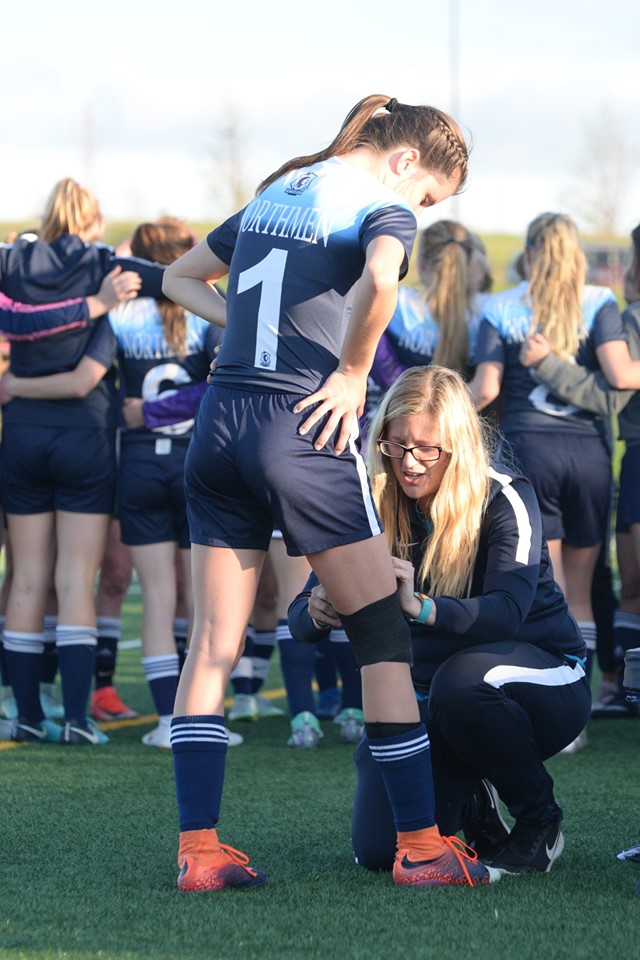Picture this. The football game is in the second half and the score is close. The rivalry between the two schools has the stands packed with students, parents, and the community rooting for their teams. The noise level is deafening. Then; everything stops and the crowd goes quiet. There are two players down on the field. Everyone is still and watching, but not the school’s athletic trainer (AT). They are on the scene in seconds! A sigh of relief passes through the stands and sidelines.
Athletic trainers have traditionally been viewed as medical professionals who work to get an injured athlete back in the game. Over the past few decades, the AT’s role has evolved to function in a wider array of settings across the medical profession. While ATs still work at all levels of most amateur and professional sports, their role has expanded to the military, entertainment (such as Cirque du Soleil), hospitals, industrial settings, and even on the frontlines of helping fight the Covid-19 pandemic.
In Michigan, ATs are board certified and licensed health care professionals who specialize in the prevention, diagnosis, treatment, and rehabilitation of injuries and sport-related illnesses. They prevent and treat chronic musculoskeletal injuries from sports, physical and occupational activity, and provide immediate care for acute injuries. In some settings, ATs also help determine return to play for injured athletes, monitor environment and weather conditions, develop and execute emergency action plans, and are first responders on the scene of accident and injuries.
The National Athletic Trainers’ Association represents and supports 45,000 members of the athletic training profession. ATs practice under the direction of and in collaboration with physicians and physical therapists, abide by HIPAA and FERPA laws, and are recognized as allied health care professionals by the American Medical Association, Health Resources Services Administration, and the Department of Health and Human Services.
Athletic trainers have a minimum of a four-year degree from a CAATE-accredited program and be certified by the Board of Certification (BOC) through an exam. More than 70 percent of athletic trainers have surpassed the minimum requirement and have earned a master’s degree. 2020 was the first year all CAATE-accredited programs required at master’s degree. Every two years, athletic trainers are required to complete Continuing Education Units (CEUs) to maintain their athletic training certification with the BOC.
The student athletes and parents in northern Michigan are very lucking to have a group of talented ATs working with them to ensure their success and safety on the field. Northern Michigan Sports Medicine Center provides several local high schools with athletic training services and has six athletic trainers on staff. A 2012 study by the American Academy of Pediatrics found that high schools with ATs have lower overall injury rates.
Our licensed athletic trainers are experts in:
- Appling protective or injury-preventive devices such as tape, bandages, and braces
- Recognizing and evaluating injuries
- Providing first aid and emergency care
- Providing concussion testing, evaluation, and management
- Developing and carrying out rehabilitation programs for injured athletes
- Planning and implementing comprehensive programs to prevent injury and illness among athletes
- Coordinating care with parent, coaches, physicians and other administrative staff
Whether it is an ankle sprain while walking your dog or a broken arm during a high school game, licensed athletic trainers are skilled health professionals that will get you back in action.








